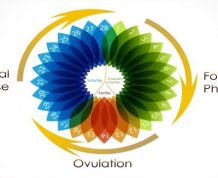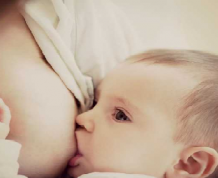![]() The information provided by our expert should not constitute a diagnosis of your condition. Always consult a medical practitioner or healthcare provider for a formal diagnosis. By making use of this content, you agree that ConceiveEasy and the expert assume no liability.
The information provided by our expert should not constitute a diagnosis of your condition. Always consult a medical practitioner or healthcare provider for a formal diagnosis. By making use of this content, you agree that ConceiveEasy and the expert assume no liability.
Understanding your cycle and knowing your fertile days are vital when it comes to getting pregnant. Additionally, timing when to baby dance during ovulation is equally as important. Ovulation is the time in a woman’s cycle when her body releases a mature egg. The egg will then travel down to the Fallopian tube where it is made available to be fertilized by the sperm. Claim Your 20 Free Ovulation Tests – Click Here
When a couple is trying to conceive, their greatest chance of conceiving is during ovulation. So it is essential that the woman knows how to pinpoint when her ovulation is, for more chances of getting pregnant. Here are three of the most common ways to track ovulation.

Also known as ovulation tests, the OPK is a quick and easy way to predict your ovulation. It is a urine-based test that detects the surge of the hormone called LH (luteinizing hormone) which is responsible for ovulation.
An OPK has two different types: the test strips that you can dip into a cup with your urine on it and the midstream applicators, otherwise known as the pee-on-a-stick. Do not confuse the OPKs with a pregnancy test, they may look the same but they function differently. The OPKs detect when you are about to ovulate so you can have a greater chance of conceiving, the latter tells you whether you are pregnant or not.
It is important to keep in mind that a positive OPK test result should give you two dark lines. If it is positive, it means that you are possibly going to ovulate in about 24-48 hours.

A BBT or a basal body thermometer functions almost like a regular thermometer. Except that it is more sensitive when it comes to detecting the body heat compared to a regular one. It might be challenging to use at first as you will have to chart the pattern of fertility changes, but as you go along, you will find that it is easy-to-use. It might be challenging to use at first as you will have to chart your result but as you go along, you will find that it’s easy-to-use.
Take the test early in the morning, before getting out of bed. Any physical activities can abruptly change your temperature. What you are looking for in your BBT chart is a rise of at least 0.4 to 0.6 degrees which happens during ovulation. Although, it is important to note that the temperature increases may be sudden or gradual.

If you have participated in any trying-to-conceive support groups online, you may have encountered the following abbreviations – CM, EWCM and fertile-quality mucus. They all talk about the same thing – the cervical mucus. Cervical mucus plays a crucial part in the pregnancy process by sustaining and preserving the sperm as it takes the long and difficult journey through the female reproductive system to meet the egg and fertilize it.
As your ovulation draws nearer, your cervical mucus slowly changes from a thick paste resemblance to a stretchy, egg white likeness. The most accurate way to identify changes in your cervical mucus is to collect and observe a sample of mucus on a daily basis. To do this, wash and dry your hands well, then insert your middle or index finger into your vagina, getting as close to your cervix as possible.
The best way to determine the changes in your cervical mucus is to collect a sample daily. To be able to do this, wash and dry your hands well, make sure it’s clean. Then in insert your middle or index finger into your vagina, as close to your cervix as possible. Take your finger our and observe its consistency.
You can choose any of these tools to help you track your ovulation. All these tools are great so the only difference is your choice on what to use among the three.










Comments